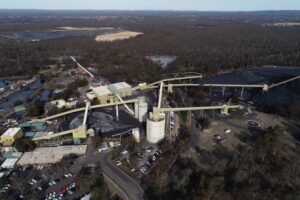US Energy Secretary Stephen Chu earlier this year suggested that solar PV without subsidies will be cheaper than both coal and gas if it could get its costs down to around $1/watt by the end of the decade – an event that would trigger a total re-examination of the way electricity was produced in the world’s largest economy.
That meant cutting the cost of modules to round 50c/W, and then bring the balance of module costs down with it. The latest research says that the module cost target will happen by 2016. Which also means that forecasts by Chinese officials and the Indian government that solar PV would reach wholesale parity with fossil fuels by 2020 (or 2017 in the case of India) are likely to occur even earlier.
GTM Research this week published the latest version of its five-year cost outlook for solar PV. Its first take was to admit that its previous predictions about costs, deployment and consolidation in the industry had been wildly misplaced. Like others, it has struggled to get its spread sheets around the stunning reduction in costs over the last few years, and misread the impact of feed in tariffs, consumer demand, and the ability of Chinese manufacturers to lower costs.
“How wrong we were,” wrote GTM analyst Shyam Mehta. “We didn’t really have an accurate, even semi-quantitative, understanding of the relationship between pricing, incentives, finance and demand.” And by “we”, GTM could include not just its own researchers, but nearly the entire global energy industry.
And predictions on how the solar market is going to play out are not getting any easier. “Truth be told, we are not a long way farther along in developing an understanding of the PV market than we were back in 2008,” he writes.
But some things can be noted: “That industry has sheer momentum behind it in terms of interested, well-capitalized parties, that technology innovation will happen at breathtaking speed, helping to push c-Si (silicon-based) module costs toward the $0.50/W mark at 17% module efficiencies over the next half-decade.
“We also don’t plan to underestimate the lucre that even cooling uncapped FIT markets still have, especially in an era when system costs are fast approaching $2.00/W. We also don’t think that pricing and demand have a nice, simple relation in terms of elasticity: customers will wait to purchase equipment for months if they think prices will come down further, but then install gigawatts of PV in a few weeks if those weeks precede a major tariff reduction.” (Hello Germany, Italy, and last week, Queensland).
The report includes a few notable graphs. The first is the cost path for module – now estimated at around 75c/W and heading down to 50c/W at a rate of knots. GTM, and most others in the industry, believe it will get to the 50c/W mark by 2016 at the latest, most likely 2015.
The second graph shows how the deployment of solar PV will move away from Europe as subsidies wind down, to Asia (where feed in tariffs have just been introduced in China and Japan), and then to those countries where solar PV can thrive with no subsidies (competing on rooftops at socket parity against fossil fuel generation delivered via the grid, or, later, by matching fossil fuels in utility scale deployment).
So which companies will survive over the next few years? GTM says that the next four years will be difficult for the global PV manufacturers. “Fundamentally, this is because of the sheer magnitude of capacity in the industry that exists in the value chain today and the speed with which feed-in tariff programs in historically vital markets in Western Europe are being ratcheted down. We are in a transitional time in the history of the PV market: the training wheels of subsidies have come off, and the next few years will represent the industry’s first, uncertain attempts to ride without support.” The table shows its estimates of module costs for most of the major manufacturers by the end of 2013. Some will have already nearly made it to 50c/W.









